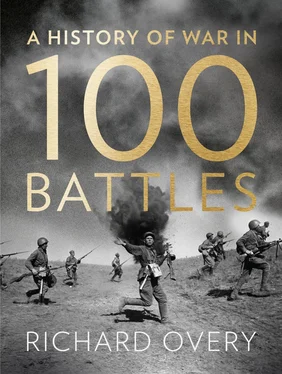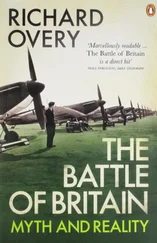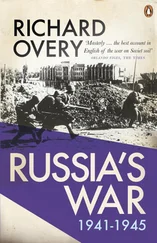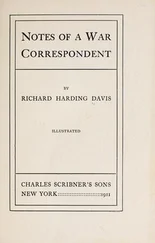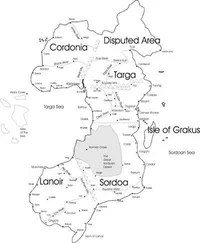For most of those on ancient or modern battlefields, the willingness to fight is dictated by the options available. Social pressure, demands for sacrifice, harsh discipline, respect for comrades – often drawn from the same area or tribe – and temporary loyalty to a cause or a person combine to prevent mass desertion. Most accounts of battle from the ordinary soldier show that the event itself is dominated by a psychological commitment to combat once the point of no return has been reached. After weeks of marching and camping, actual battle can be exhilarating as men are overtaken by waves of pent-up adrenalin. Unsurprisingly, fear also exists widely in battle, yet fear does not debilitate those who fight. William Wharton, an American novelist who served at the front line in Europe in 1944, found that he was ‘scared more than most people’, but he controlled his fear because of his companions: ‘I discover the difference between being scared and being a coward is having other people find out.’ Small-group loyalty has almost certainly been the key to combat in battle because most soldiers and sailors see only a miniature part of the conflict in which they are involved, fighting side-by-side with the few men around them, the battlefield hidden by dust (in early battles), smoke (in later conflicts) or the accident of geography. In hand-to-hand fighting, found in battles across the whole historical span, there is little sense of any order or shape to the battle: the enemy in front of you has to be killed or maimed or he will kill you. At that moment, religious enthusiasm, loyalty to the king or the national ideal become meaningless. Battle is really a description of thousands of small fights for survival, which merge into the single contest once historians give them some narrative shape to explain who won and who lost.
For a large part of 4,000 years of recorded conflict, men have fought because of what they were promised or hoped to find when the enemy, whether on a battlefield or in a siege, is defeated. Looting – whether for treasure, slaves or sex – runs through the accounts of thousands of battles. The huge Ottoman army gathered by Sultan Mehmet II to besiege Constantinople in 1453 may have been attracted to the idea of jihad against the bastion of Orthodox Christianity, but as one observer noted of the repeated and fruitless attempts to storm the city, the soldiers ‘ran towards certain death for booty’. When the city was taken, Mehmet allowed only a day of looting instead of the three customarily allowed under Islamic law, but the eyewitness accounts render a squalid picture of Ottoman soldiers on the rampage, taking anything portable, tying together groups of inhabitants to be dragged off to slavery, raping both women and young boys. Soldiers were often not paid regularly for their service before the last few hundred years (though mercenaries would only fight if they thought they would profit from it with cash, salaries or loot), so they would take any perquisites of war they could find. At Poltava in 1709, Russian troops stripped their Swedish enemies naked on the battlefield, dead and wounded, and took away the boots and tunics as their just deserts. In much classical and early warfare, stripping the dead could provide a moment of good luck, as officers and commanders often took their cash or jewels with them in case they were appropriated in their absence. The capture of the Turkish commander’s ship at Lepanto in 1576 revealed his entire fortune in chests below decks, and the coins and jewellery were distributed among the incredulous marines and sailors who found it.
The possibility of booty was immediate before the professionalization of the military and its support organizations in the nineteenth century. For much of the previous 3,500 years covered by the battles in this book, armies were complex social units, accompanied by women and children, often in large numbers, and a motley crew of retainers, servants and labourers bringing the supplies and guarding any treasure. Wives commonly accompanied the march and awaited the outcome in the baggage train. Other women were brought along, voluntarily or otherwise, to service the sexual needs of the men. Hundreds of women would be employed preparing food, moving supplies, mending uniforms or helping to dig trenches. Ottoman armies numbered by chroniclers in the hundreds of thousands usually contained a whole community of followers, wives and concubines; the core of fighting men was only a smaller fraction of the whole. In Europe, the large train of women had been gradually suppressed by the seventeenth century, partly to allow armies to become more mobile but also on moral grounds. Women came to be excluded from military occupations and were left behind in the garrison towns. Those women who accompanied the army were widely regarded as prostitutes. This explains the savage killing of hundreds of women after the Battle of Naseby in the English Civil War. Puritan soldiers punished the women for their immorality, even though a number of them were the wives of Royalist officers. As women came to be excluded from military life, so battles became a male domain, occasionally invaded by a handful of women who wanted to serve as soldiers (an estimated 30 to 50 in the French Revolutionary Wars, 400 in the American Civil War). In the modern age, the identification of battle as an expression of male identity was a central feature of much pacifist writing by women, most famously in Virginia Woolf’s 1938 critique of posturing manhood, The Three Guineas . Since the First World War, women have once again come to form an important auxiliary arm to the regular forces, but now they are uniformed and organized, and bear no resemblance to the vast baggage-trains of earlier times.
In addition to the prospect of booty, soldiers have also been sustained, or alarmed, by religious symbols, superstitions, visions and omens. There are obvious reasons why appeals to the supernatural were important. Belief in a god or gods or the power of the sacred was common to almost all armies throughout history. Since victory was never certain, soldiers and their commanders searched for some sign that they enjoyed divine protection; indications that the opposite might be the case did not necessarily stop soldiers fighting, but it could be deeply demoralizing. The ancient Greek historian Herodotus described arguments in Athens over how to interpret the Delphic Oracle when the priestess predicted that an enemy from the east would bring inevitable woe to the city – ‘from the topmost roofs trickles black blood’ – but that all-seeing Zeus ‘gives a wooden wall’ for ‘divine Salamis’. The pronouncement was difficult to interpret, though it was widely regarded as a signal of impending doom. But the Athenian Themistocles insisted that the wooden wall meant ships, and that the city should spend its accumulated wealth on procuring a new fleet. His view prevailed and the Persian fleet was destroyed at Salamis a few months later. In the later siege of Constantinople, when the fearful Greek population of the city awaited the Ottoman onslaught, there was an eclipse of the full moon that left just a thin lunar crescent, symbol of their Islamic enemy. The inhabitants saw this as a profound omen of the city’s collapse; the Ottoman army rejoiced at such a clear indication of divine favour and a few days later the city was in their hands. Battles were fought by soldiers blessed by priests, buoyed up by favourable auguries and omens, or certain that death in a sacred cause would ensure a life hereafter.
The conditions of most battlefields were such that superstitious expectation offered a thin ray of hope that somehow, amidst the sheer arbitrariness of combat, you might survive where others perished. The context of fighting across the ages has been universally grim. Soldiers often fought after a long march, already exhausted, with bleeding or blistered feet. They were at the mercy of the weather, and mud, rain or snow made a tough assignment tougher still. Dirt, insects, infection and hunger added to a soldier’s routine woes. The anti-hero in Erich Maria Remarque’s All Quiet on the Western Front complains that his experience of war is only ‘despair, death, fear… an abyss of suffering’. The searing stories of the retreat of Napoleon’s Grande Armée from Russia in 1812 show what price ordinary soldiers paid for their leaders’ grand ambitions, as well as the civilians unlucky enough to be in the path of a desperate army. In battle, the physical demands are hard for anyone who has not experienced it to grasp. After the Battle of Blenheim in 1704, the defeated Comte de Mérode recorded that he had fought continuously for thirty hours, despite suffering an injured and swollen knee, had had no sleep, no food, and just one swig of water. This could be a soldier’s tale from any battle. ‘Why,’ asks William Wharton, ‘do humans, especially military humans, want to do things the hard way?’ Soldiering before the age of aircraft and long-range artillery was an inefficient way of utilizing manpower that too often had soldiers fighting in a daze of exhaustion, at the end of their tether, bleeding from unnoticed wounds, and all because of what their commanders asked of them. Small wonder that time and again in battle accounts, from swigs of rum before a naval engagement to the half pint of brandy served to Napoleon’s soldiers just before Austerlitz, alcohol is used to revive flagging spirits, to dull sharp fears or to combat the freezing climate.
Читать дальше
